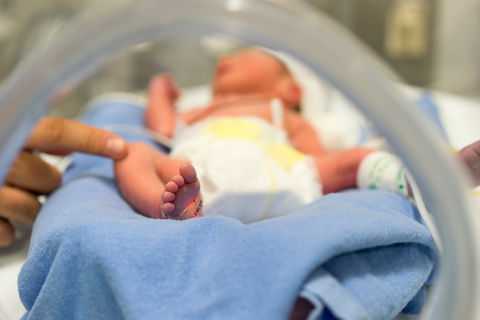News
Industrial
Wearable sensor lets expectant mother monitor baby’s heartbeat

Stevens Institute of Technology researchers have designed a tiny wearable vibration monitor that can monitor fetal heartbeats. The device may help reduce the problem of stillbirths. (Pixelistanbul/Getty)
Researchers at Stevens Institute of Technology have developed a non-invasive, wearable vibration monitor that could allow expectant parents to hear their baby’s heartbeat continuously at home. The device, considered potentially more accurate than any currently available fetal heartrate monitor, could reduce the incidence of stillbirths.
The device leverages smartphone technology by using the same commercial sensors used in smartphones to horizontally or vertically orient the device. It can record vibrations sent through a mother’s abdomen when her baby’s heart beats, or when the fetus squirms and kicks.
Doctors believe the device could potentially reduce an estimated 2.6 million stillbirths per year worldwide. “Almost a third of stillbirths occur in the absence of complicating factors,” said Negar Tavassolian, an associate professor who led the work at Stevens, in a statement. “Our device could let a pregnant woman know if her fetus is compromised and she needs to go to the doctor.”
Many stillbirths are preceded by variations in fetal movement and heartrate. Lightweight monitors that detect vibrations generated from a heartbeat could be used throughout pregnancy to ensure that distressed fetuses receive prompt medical attention. The work is reported in the July 24 early access issue of IEEE Sensors Journal.
Tavassolian and first author Chenxi Yang, a graduate student at Stevens, teamed up with Bruce Young and Clarel Antoine, two OB-GYNs at New York University-Langone Medical Center, to test their sensors. In experiments>A vibration monitor offers advantages over existing tools based>One issue with monitoring fetal heartbeats is that the vibration of tiny fetus hearts is muffled by the movements of the maternal host. The Stevens team circumvented this issue by combining signals from three different sensors and using algorithms to isolate the fetal heartbeat. The monitor also poses no risk to the fetus—a concern with ultrasound monitors, which can heat tissue if used continuously for long periods.
Vibration monitors can also offer an objective measure of fetal movement, which is currently assessed simply by asking moms to count the times their baby kicks. The researchers believe combining heart-rate and movement data could provide more vital insights into fetal health.
The current device uses commercially available sensors. However, the researchers hope to eventually patent and market a custom-built device.
@Spencer Chin
Pre:Using sensors to monitor water usage when growing corn 2025-12-29
Next:Sensor monitors wounds as they heal 2025-12-29

 Collect
Collect
 Navigate:
Navigate:






